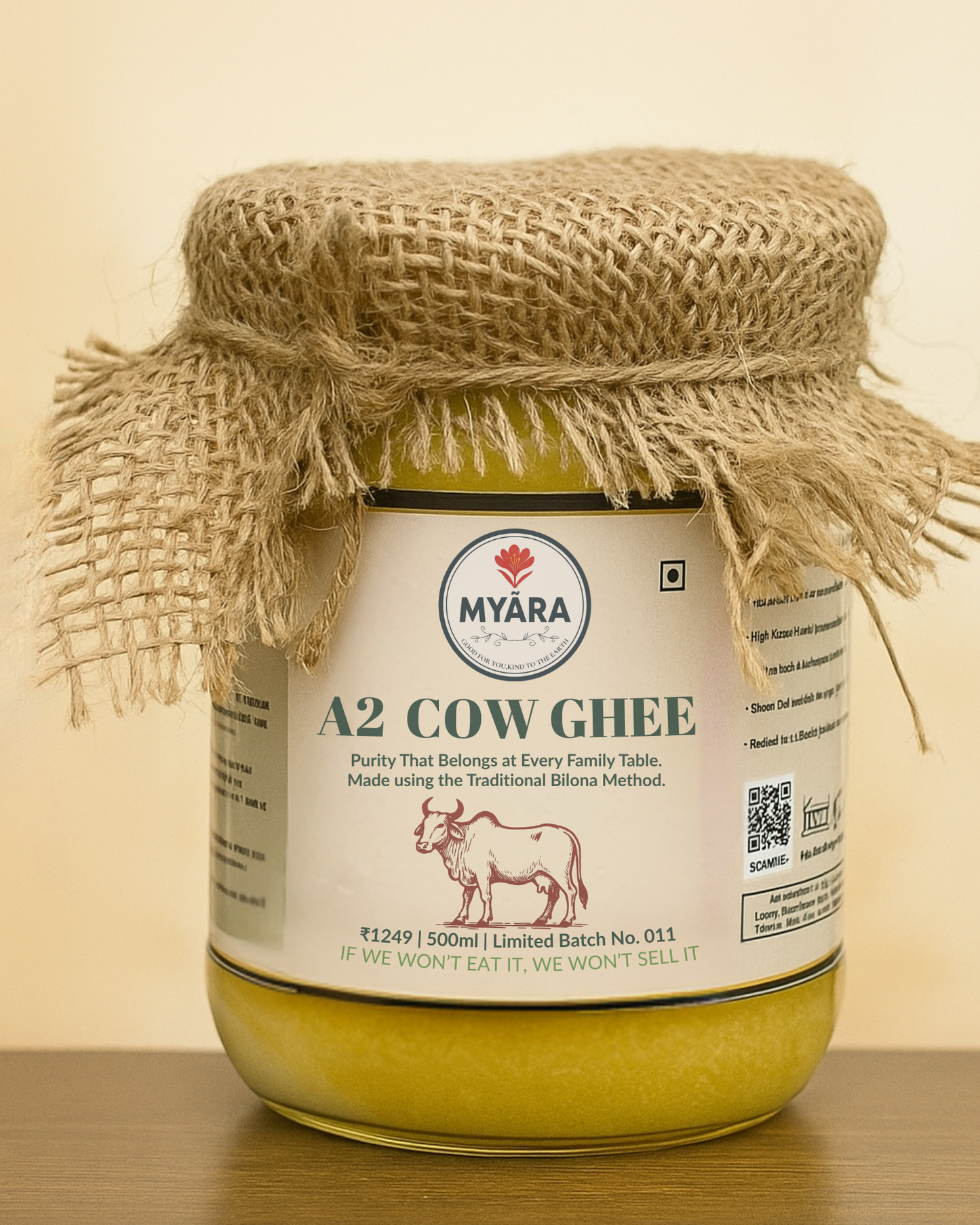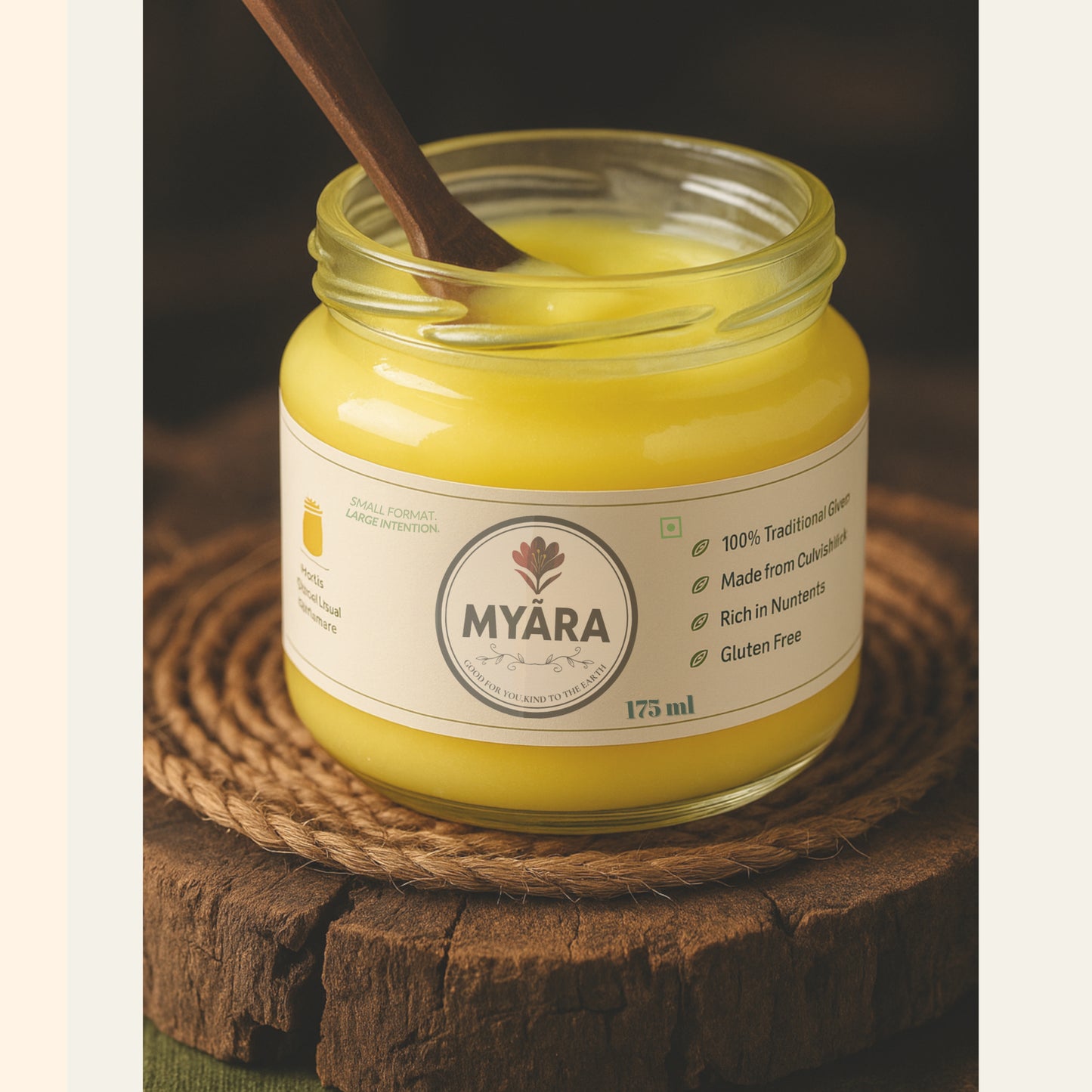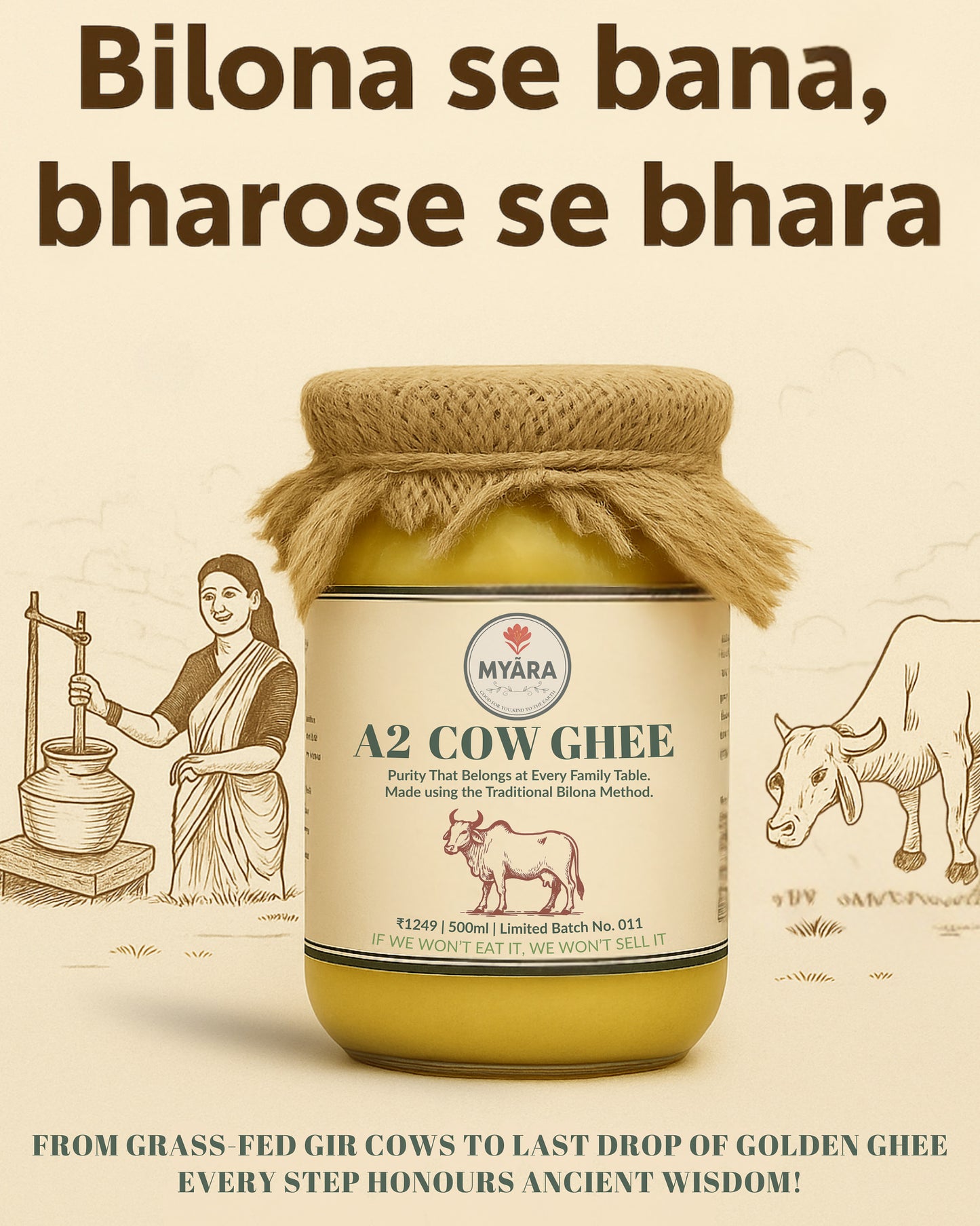Myãra Organics
A2 Cow Ghee
A2 Cow Ghee
Couldn't load pickup availability
Why Choose Myãra over any other brand?
Parameter |
Bilona Method (The Artisanal Standard) |
Direct Cream Method (The Industrial Shortcut) |
Starting Material |
Whole A2 Milk, cultured into Curd (Dahi). | Raw Cream mechanically separated from milk. |
Key Biochemical Process |
Lactic Acid Fermentation. Lactobacillus bacteria consume the milk's lactose and proteins. |
Mechanical Separation. A centrifuge forcibly separates the lighter cream from the denser milk. No fermentation occurs. |
Microbial Impact |
Introduces beneficial bacteria that fundamentally alter the milk's chemistry before heating. | Sterile process. No microbiological transformation of the milk's nutrients. |
Nutrient & Health Profile |
High in Butyric Acid: Fermentation is a butyric acid factory. The bacteria convert milk components into this vital short-chain fatty acid, which is the primary fuel for colon cells, reduces inflammation, and strengthens the gut lining. Higher in CLA (Conjugated Linoleic Acid): The biohydrogenation process by bacteria in the cow's gut and during fermentation increases the CLA content. CLA is linked to improved metabolism and immunity. More Bioavailable Vitamins: The fermentation process enhances the bioavailability of fat-soluble vitamins like A, D, E, and especially K2, which is critical for calcium metabolism. Easier to Digest: The |
Lower in Butyric Acid: Contains only the butyric acid that was naturally present in the milk fat. The creation of additional butyric acid is completely bypassed. Lower in CLA: Contains only the baseline CLA from the milk. The beneficial fermentation step is skipped. Less Bioavailable Vitamins: Vitamins are present but may be less easily absorbed by the body without the preparatory action of fermentation. Harder to Digest: While the final heating removes most lactose and casein, the initial cream still contains them in their original, more complex forms. It is less suitable for those with dairy sensitivities. |
Sensory Profile |
Complex Aroma & Flavour: The slow heating of cultured butter produces a rich, nutty, slightly tangy, and caramelized flavour profile. This is due to the presence of fermentation byproducts. Superior Granular Texture (Danedar): The specific fatty acid profile created during fermentation, combined with slow cooling, promotes the formation of a desirable, crystalline granular texture. |
Mild & Flat Flavour: The taste is one-dimensional, tasting simply of cooked fat. It lacks the aromatic complexity that defines authentic desi ghee. Smooth or Waxy Texture: Often has a paste-like, uniform texture. It rarely achieves the authentic |
Economics |
Low Yield, High Value. It takes approximately 25-30 litres of A2 milk to produce 1 litre of Bilona ghee. The process is slow and labour-intensive. |
High Yield, Low Cost. A highly efficient, industrial process designed for maximum extraction and speed. |
Share




Also check our other products
-
A2 Cow Ghee
Regular price From Rs. 499.00Regular priceUnit price / per






